|
|
2017年, 第4卷, 第4期 刊出日期:2017-10-01
|
上一期
下一期 |
|
|
|
|
|
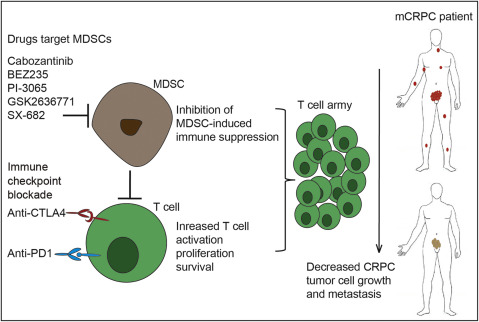
Combined immunotherapy for advanced prostate cancer:Empowering the T cell army
Sufyan Suleman, Gong-Hong We
Asian Journal of Urology, 2017, 4(4): 199-200.
doi:10.1016/j.ajur.2017.04.003
 摘要
摘要
(
530 )
 PDF
PDF (1001KB)
(
683
)
Prostate cancer (PCa) is the second leading cause of death among men worldwide. Androgen signaling plays key roles in PCa progression[1], and so far available therapeutic agents mainly target androgens or androgen receptor (AR)[2]. However, the patients receiving these treatments often recurs with progression to castration resistant prostate cancer (CRPC)[3]. Metastatic CRPC (mCRPC) is the advanced and lethal stage of PCa[4]. Recent advances in the field show that immune checkpoint blockade (ICB) is the paramount choice for targeting many types of cancers including PCa[4-6]. ICB generates effective therapeutic response across certain cancers[5], whereas it failed to improve overall survival of patients with mCRPC[7]. To address this challenge, one recent study by Lu and colleagues[8] has demonstrated an ICB approach combined with targeted drugs for myeloid-derived immune suppressive cells (MDSCs), thereby enforcing the T cells to combat mCRPC tumor cells[8]. The authors have shown that, MDSCs are recruited to tumor microenvironment (TME) and exert immune suppressive impact on Tcells. MDSCs immune suppression can be prevented using targeted drugs combined with ICB. The landmark strategy introduced by authors is a step towards solving the problem of drug resistance and ICB evasion in PCa and its progression to mCRPC.
参考文献 |
相关文章 |
计量指标
|
|
|
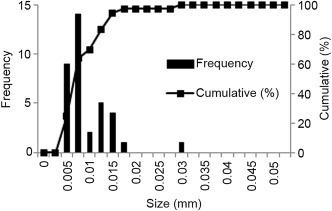
Effect of Blumea balsamifera extract on the phase and morphology of calcium oxalate crystals
Charlimagne M. Montealegre, Rizalinda L. De Leon
Asian Journal of Urology, 2017, 4(4): 201-207.
doi:10.1016/j.ajur.2016.08.009
 摘要
摘要
(
785 )
Objective: Calcium oxalate crystals are found in majority of kidney stones with calcium oxalate monohydrate (COM) as one of the primary types of kidney stones. Various methods of treatment exist, including herbal treatment in the Philippines that uses the medicinal herb Blumea balsamifera (B. balsamifera).
Methods: The effect of B. balsamifera extract on the morphology of calcium oxalate crystals was studied by light microscopy, image analysis, powder X-ray diffraction and scanning electron microscopy.
Results: The extract decreased the crystal size by 5.22%-82.62% depending on the degree of supersaturation. Through analysis of the projected area of the crystals, the extract was found to shift the phase of the crystals from COM to calcium oxalate dihydrate (COD). This shift in phase is significant with a COM to COD shift of 88.26% at 0.5 mg/mL of extract and 91.53% at 1.0 mg/mL of extract. Scanning election microscopic (SEM) images revealed aggregation of crystals at 0 mg/mL of extract. At 1.0 mg/mL of extract, the scanning electron micrographs showed discernible crystal unit boundaries.
Conclusion: B. balsamifera extract was observed to have decreased crystal size, shifted crystal phase from COM to COD and prevented the aggregation of calcium oxalate crystals.
参考文献 |
相关文章 |
计量指标
|
|
|
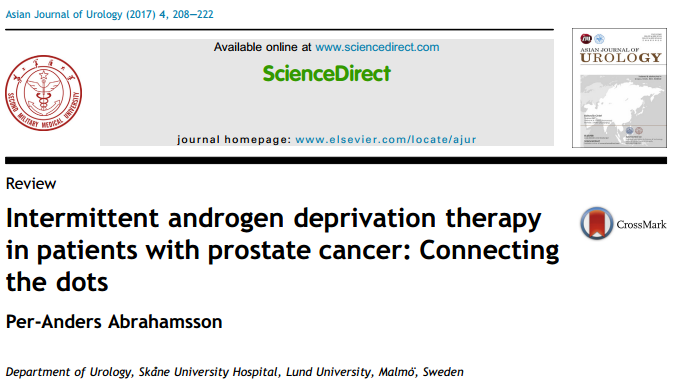
Intermittent androgen deprivation therapy in patients with prostate cancer:Connecting the dots
Per-Anders Abrahamsson
Asian Journal of Urology, 2017, 4(4): 208-222.
doi:10.1016/j.ajur.2017.04.001
 摘要
摘要
(
468 )
 PDF
PDF (450KB)
(
60
)
Intermittent androgen deprivation therapy (IADT) is now being increasingly opted by the treating physicians and patients with prostate cancer. The most common reason driving this is the availability of an off-treatment period to the patients that provides some relief from treatment-related side-effects, and reduced treatment costs. IADT may also delay the progression to castration-resistant prostate cancer. However, the use of IADT in the setting of prostate cancer has not been strongly substantiated by data from clinical trials. Multiple factors seem to contribute towards this inadequacy of supportive data for the use of IADT in patients with prostate cancer, e.g., population characteristics (both demographic and clinical), study design, treatment regimen, on-and off-treatment criteria, duration of active treatment, endpoints, and analysis. The present review article focuses on seven clinical trials that evaluated the efficacy of IADT vs. continuous androgen deprivation therapy for the treatment of prostate cancer. The results from these clinical trials have been discussed in light of the factors that may impact the treatment outcomes, especially the disease (tumor) burden. Based on evidence, potential candidate population for IADT has been suggested along with recommendations for the use of IADT in patients with prostate cancer.
参考文献 |
相关文章 |
计量指标
|
|
|
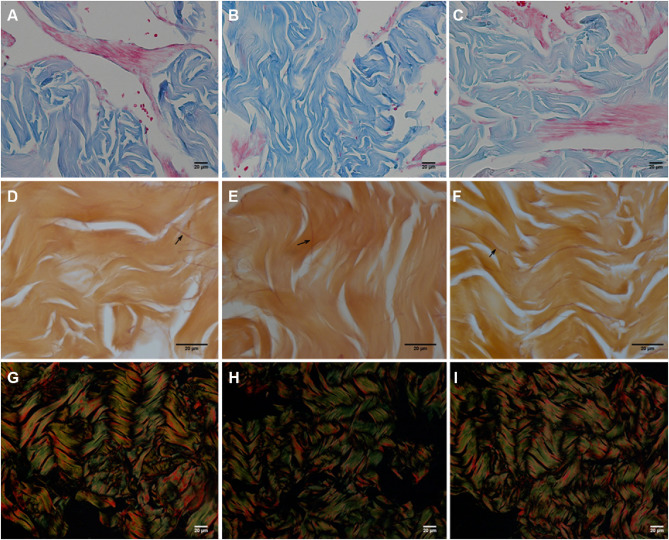
Testosterone replacement maintains smooth muscle content in the corpus cavernosum of orchiectomized rats
Graziele Halmenschlager, Ernani Luis Rhoden, Gabriela Almeida Motta, Lucas Sagrillo Fagundes, Jorge Luiz Medeiros Jr, Rosalva Meurer, Cláudia Ramos Rhoden
Asian Journal of Urology, 2017, 4(4): 223-229.
doi:10.1016/j.ajur.2017.02.001
 摘要
摘要
(
376 )
 PDF
PDF (4198KB)
(
54
)
Objective: To evaluate the effects of testosterone (T) on the maintenance of corpus cavernosum (CC) structure and apoptosis.
Methods: Animals were divided into three groups:sham operation group (n=8) underwent sham operation; Orchiectomized (Orchiec)+oily vehicle group (n=8) underwent bilateral orchiectomy and received a single dose of oily vehicle by intramuscular injection (i.m.) 30 days after orchiectomy; and Orchiec+T group (n=8) underwent bilateral orchiectomy and received a single dose of T undecanoate 100 mg/kg i.m. 30 days after the surgery. Animals were euthanized 60 days after the beginning of the experiment with an anesthetic overdose of ketamine and xylazine. Blood samples and penile tissue were collected on euthanasia.Azan's trichrome staining was used to evaluate smooth muscle,Weigert's Fucsin-Resorcin staining was used to evaluate elastic fibers and Picrosirius red staining was used to evaluate collagen.Apoptosis was evaluated using TUNEL technique.
Results: T levels decreased in Orchiec + oily vehicle when compared to sham operation and Orchiec + T groups (p < 0.001).T deprivation reduced trabecular smooth muscle content and penile diameter and T replacement maintained both parameters (p = 0.005 and p = 0.001,respectively).No difference was observed in the content of sinusoidal space (p = 0.207),elastic fibers (p = 0.849),collagen (p = 0.216) and in apoptosis (p= 0.095).
Conclusion: Normal testosterone levels maintain CC smooth muscle content and do not influence elastic fibers,collagen content and apoptotic index.Further studies should be performed in order to investigate the mechanisms by which androgen mediates its effects on CC structure.
参考文献 |
相关文章 |
计量指标
|
|
|

Pretreatment neutrophil-to-lymphocyte ratio predicts worse survival outcomes and advanced tumor staging in patients undergoing radical cystectomy for bladder cancer
Yu Guang Tan, Ernest Eu, Weber Lau Kam On, Hong Hong Huang
Asian Journal of Urology, 2017, 4(4): 239-246.
doi:10.1016/j.ajur.2017.01.004
 摘要
摘要
(
522 )
 PDF
PDF (2430KB)
(
56
)
Objective: To determine the role of neutrophil-to-lymphocyte ratio (NLR) in prognosticating survival outcomes in patients with advanced/metastatic urothelial bladder cancer.
Methods: We retrospectively reviewed 84 patients undergoing radical cystectomy (RC) for UCB from January 2002 to June 2012. NLR was computed (median:5 days) prior to surgery. No patients received neoadjuvant chemotherapy. NLR was analyzed as a continuous variable and a cut-off point of 2.7 was obtained, with a statistical receiver operating characteristics of 0.74. Kaplan-Meier curves, multivariate Cox proportional hazard and logistics regression models were used to predict NLR association with survival outcomes.
Results: The median follow-up period was 30.1 months (range:3.2-161.7) owing to high recurrence rate and subsequent mortalities, compared to the median 64.7 months in patients alive at the end of study period. NLR ≥ 2.7 was associated with worse survival outcomes (5-year disease-specific survival:22% vs 58%, p=0.017, 95%CI:1.193-6.009; 5-year overall survival:23% vs 60%,p=0.008, 95%CI:1.322-6.147). Furthermore, on multivariate analyses, higher NLR was independently associated with higher recurrence rate (p=0.007, HR=6.999, 95% CI:1.712-28.606), higher T staging (p=0.021, HR=3.479, 95%CI:1.212-9.990) and lymph node involvement (p=0.009, HR=4.534, 95%CI:1.465-14.034).
参考文献 |
相关文章 |
计量指标
|
|
|
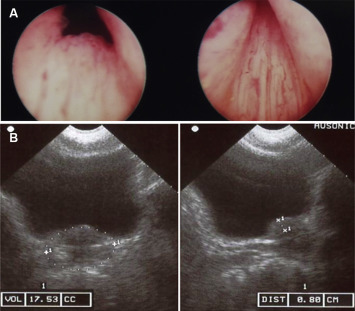
Patients with small prostates and low-grade intravesical prostatic protrusion——A urodynamic evaluation
Han Jie Lee, Alvin Lee, Hong Hong Huang, Palaniappan Sundaram, Keong Tatt Foo
Asian Journal of Urology, 2017, 4(4): 247-252.
doi:10.1016/j.ajur.2017.03.003
 摘要
摘要
(
557 )
 PDF
PDF (1245KB)
(
55
)
Objective: Despite high-grade intravesical prostatic protrusion (IPP) being closely related to bladder outlet obstruction (BOO), up to 21% of patients with low IPP remain obstructed. This study evaluates the characteristics and urodynamic findings of men with small prostates and low IPP.
Methods: One hundred and fourteen men aged >50 years old with lower urinary tract symptoms (LUTS) were assessed with symptoms, uroflowmetry, serum prostate-specific antigen (PSA), transabdominal ultrasound measurement of prostate volume (PV), IPP and post-void residual urine (PVRU). All patients underwent pressure flow studies. Patients with PV < 30 mL and IPP ≤ 10 mm were examined for parameters correlating with BOO or impaired detrusor contractility.
Results: Thirty-six patients had PV < 30 mL and IPP < 10 mm. Nine patients (25.0%) had urodynamic BOO, all with normal bladder contractility. Fourteen patients (38.9%) had poor detrusor contractility and all had no BOO. PV, PVRU and IPP were significantly associated with BOO, with IPP showing greatest positive correlation. Both Qmax and IPP were significantly associated with detrusor contractility. At 5-year follow-up, most patients responded to medical therapy. Only three out of nine patients (33.3%) with BOO eventually underwent surgery, and all had a high bladder neck seen on the resectoscope. Only one patient (7.1%) with poor detrusor contractility eventually required surgery after repeat pressure flow study revealed BOO.
Conclusion: In men with small prostates and low IPP, the presence of BOO is associated with higher PV, PVRU and IPP, and most respond well to medical management. BOO can possibly be explained by elevation of the bladder neck by a small subcervical adenoma.
参考文献 |
相关文章 |
计量指标
|
|
|
Anterior perineal hernia after anterior exenteration
Ka Wing Wong, Terence Chun-ting Lai, Ada Tsui-lin Ng, Brian Sze-ho Ho, James Hok-leung Tsu, Chiu Fung Tsang, W. K. Ma, Ming Kwong Yiu
Asian Journal of Urology, 2017, 4(4): 253-255.
doi:10.1016/j.ajur.2017.03.002
 摘要
摘要
(
444 )
 PDF
PDF (1293KB)
(
50
)
Perineal hernia is a rare complication of anterior exenteration. We reported this complication after an anterior exenteration for bladder cancer with bleeding complication requiring packing and second-look laparotomy. Perineal approach is a simple and effective method for repair of perineal hernia.
参考文献 |
相关文章 |
计量指标
|
|
|
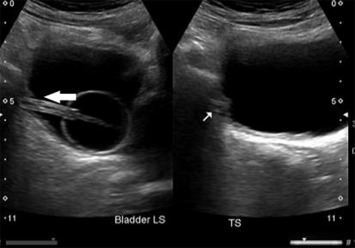
Inadvertent placement of a urinary catheter into the ureter:A report of 3 cases and review of the literature
Rui Luo, Song Liang Lee, Foo Cheong Ng, Li-Tsa Koh
Asian Journal of Urology, 2017, 4(4): 256-261.
doi:10.1016/j.ajur.2016.08.011
 摘要
摘要
(
429 )
 PDF
PDF (1801KB)
(
58
)
We describe three cases of inadvertent placement of the urinary catheter into the ureter. An 85-year-old gentleman on long-term indwelling catheter (IDC) for neurogenic bladder presented with fever and right flank pain. CT of abdomen and pelvis demonstrated the tip of the IDC to be located within the right vesicoureteric junction with acute right hydronephrosis and acute pyelonephritis. A 74-year-old woman, on long-term IDC for neurogenic bladder was found to have hydronephrosis on ultrasound imaging. Contrast-enhanced CT intravenous pyelography done subsequently showed the IDC was in the right distal ureter. A 47-year-old lady, on IDC for urinary retention and voiding dysfunction likely secondary to schizophrenia and anti-psychotic medications, presented with raised creatinine. A non-enhanced CT of her abdomen and pelvis was done and showed that the tip of the urethral IDC was located up to the left vesicoureteric junction. In all patients, the hydronephrosis resolved after changing the catheter and they were well on discharge. We also review the literature to identify the incidence, outcomes and possible risk factors. To our knowledge, only 20 cases have been reported thus far in the English literature. Although serious complications can occur, the incidence is very low. One risk factor that has been identified is long-term catheterization in patients with neurogenic bladder. We do not recommend routine imaging after catheterization in this group of patients. However, we should still be mindful of the possibility of this occurrence and evaluate and treat as necessary when clinical suspicion arises.
参考文献 |
相关文章 |
计量指标
|
|
|
Successful removal of a penoscrotal constricting ring in a 49-year-old male
Yadong Lu, Teck-Wei Tan, KO Weber Lau
Asian Journal of Urology, 2017, 4(4): 262-264.
doi:10.1016/j.ajur.2017.01.003
 摘要
摘要
(
503 )
 PDF
PDF (871KB)
(
50
)
Placement of constricting devices around the penis and scrotum for autoerotic purposes or increasing sexual performance represents a well-known challenge for urologists and can result in serious complications. The removal of the constricting devices can be challenging and often requires resourcefulness and multidisciplinary approach. We report one case of successful removal of a penoscrotal constricting metal ring in a 49-year-old male using a handheld orthopaedic saw under ketamine and midazolam sedation in the emergency department.
参考文献 |
相关文章 |
计量指标
|
|
 当期目录
当期目录
